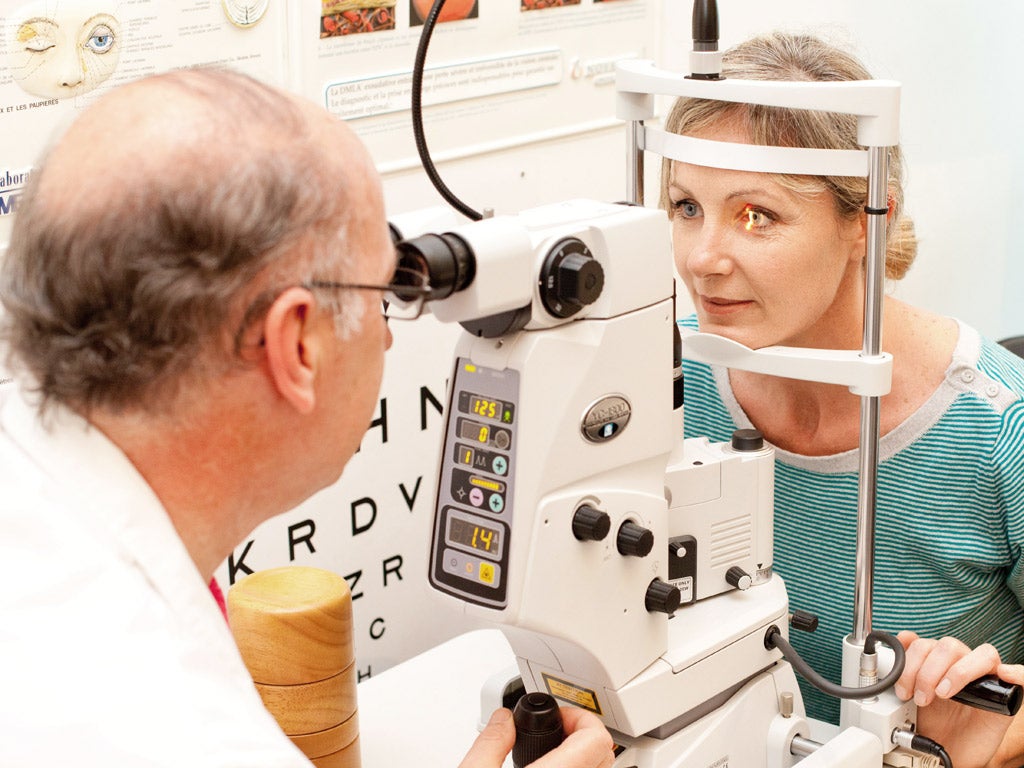Alzheimer's linked to glaucoma eye condition

Your support helps us to tell the story
From reproductive rights to climate change to Big Tech, The Independent is on the ground when the story is developing. Whether it's investigating the financials of Elon Musk's pro-Trump PAC or producing our latest documentary, 'The A Word', which shines a light on the American women fighting for reproductive rights, we know how important it is to parse out the facts from the messaging.
At such a critical moment in US history, we need reporters on the ground. Your donation allows us to keep sending journalists to speak to both sides of the story.
The Independent is trusted by Americans across the entire political spectrum. And unlike many other quality news outlets, we choose not to lock Americans out of our reporting and analysis with paywalls. We believe quality journalism should be available to everyone, paid for by those who can afford it.
Your support makes all the difference.Peering into a patient's eyes could provide a new way to diagnose and track Alzheimer's disease, say scientists.
Researchers detected distinct changes in the retinas of mice that had been genetically engineered to develop Alzheimer's.
A similar loss of retinal cells could be an indicator of the disease in humans, they believe.
"The retina is an extension of the brain so it makes sense to see if the same pathologic processes found in an Alzheimer's brain are also found in the eye," said Dr Scott Turner, from Georgetown University Medical Centre in the US, who took part in the research.
"We know there's an association between glaucoma and Alzheimer's in that both are characterised by loss of neurons, but the mechanisms are not clear.
"This study suggests another path forward in understanding the disease process and could lead to new ways to diagnose or predict Alzheimer's that could be as simple as looking into the eyes."
Glaucoma, a vision loss condition caused by damage to the optic nerve, is increasingly being viewed as a neurodegenerative disorder similar to Alzheimer's.
The new study focused on two parts of the retina, called the inner nuclear layer and the retinal ganglion layer.
Each showed a significant loss of thickness associated with Alzheimer's in the mice. Compared with healthy control animals, the inner nuclear layer suffered a 37% loss of neurons and the ganglion layer a 49% loss.
The findings were presented at the Society for Neuroscience annual meeting in San Diego, California.
In humans, the structure and thickness of the retina can be measured using a technique called optical coherence tomography.
Dr Turner added that it was possible new treatments developed for Alzheimer's may also be useful for glaucoma.
PA
Join our commenting forum
Join thought-provoking conversations, follow other Independent readers and see their replies
Comments